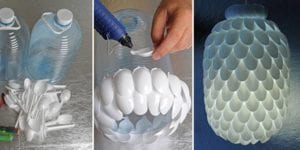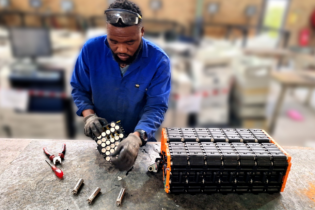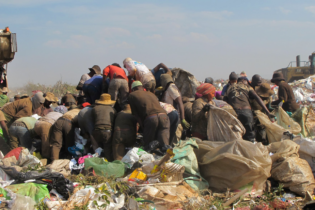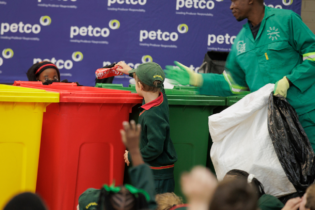Upcycling is a fun and creative way to transform old products and packaging into something with a new purpose. According to the Department of Environmental Affairs (DEA)’s Waste Management Hierarchy1, upcycling, which in the most basic sense is ‘reusing’ waste, is the second most preferred waste management option after ‘reducing’ your waste.
Have you ever used an old glass bottle as a candle holder, given an old pair of jeans new life by turning them into shorts or even turned an old tyre into a pot plant? If you answered yes to any one of these questions, you have practised upcycling.
“More people are adopting upcycling at home as it is a fun way to make use of waste, and alleviate some of the pressure on our waste disposal infrastructure,” says Jan Palm, President of the Institute of Waste Management of Southern Africa (IWMSA).
Fun and responsible
“A Do It Yourself (DIY) project is always an enjoyable challenge, and by upcycling those items that would have otherwise become waste, you are being environmentally responsible” explains Palm. “Upcycling is different to recycling. Upcycling is the method of reusing waste without destroying it, where recycling is a process of breaking down waste products to extract resources to form a new product,” he continues. According to the DEA, upcycling is a preferred waste management option and is ranked above recycling. The industrial processes used to extract products from recycled waste are most often associated with the release of industrial emissions and an extensive use of energy. Upcycling is, therefore, the more environmentally friendly option to deal with waste.
“You would be amazed at how everyday objects, such as plastic and glass beverage bottles can be transformed into the most beautiful decorative items,” says Palm. “We’d like to encourage South Africans to instil a culture of upcycling in our homes. Next time you see something that you are tempted to buy, use it as inspiration. Embark on a DIY project, using items you already have at home, to make the same product; it’s a great way to add your own unique twist and create a one-of-a-kind item,” he continues.
Creative challenge
Collect all of your used straws for example and challenge your children’s creativity; have a look at these interesting projects that are sure to keep them entertained over the weekend.
“Every bit of waste that does not end up in a landfill helps alleviate the pressure on our waste management infrastructure. So, let us all encourage the whole family to upcycle in creative ways,” Palm concludes.
To learn other methods of responsible waste management, have a look at
IWMSA’s upcoming training schedule.
For more information on the Institute of Waste Management of Southern Africa visit
www.iwmsa.co.za. You can also follow IWMSA on Facebook (
https://www.facebook.com/iwmsa) and Twitter (
https://twitter.com/IWMSA).
1Department of Environmental Affairs (2008). National Waste Management Strategy, Waste Management Hierarchy.








